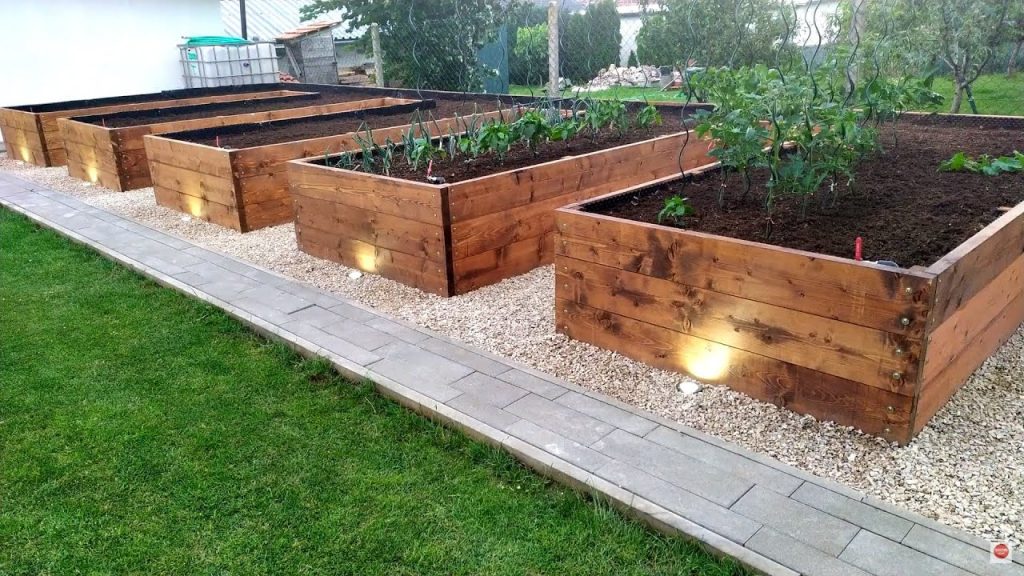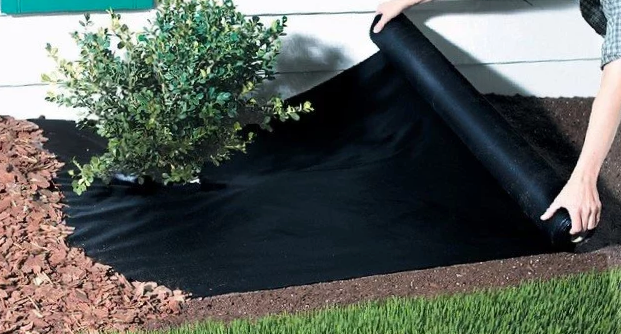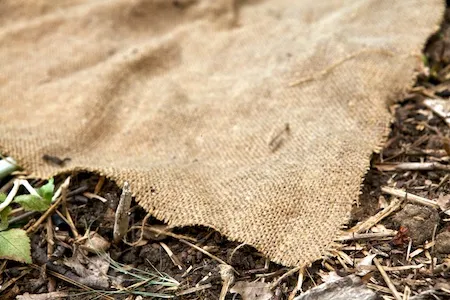What Do I Put in a Raised Garden Bed’s Bottom?

Who doesn’t enjoy having a beautiful garden outside their home? But it’s not simple. particularly for novices. Most individuals make a lot of mistakes, such as planting straight on the ground without understanding the drawbacks. For this reason, a raised bed in the garden is essential. Garden spaces that are raised from the soil’s surface by two or three feet are referred to as raise beds. It might just be a rectangle patch, or it might be constructed out of more complex materials.
Table of Contents
What Do I Put in a Raised Garden Bed’s Bottom?
Raised beds can, however, offer a variety of benefits, including reducing weed development and enhancing the soil quality for plant growth. A raised bed garden is a great choice if you struggle to deal with your soil or want to lessen the amount of work required to grow crops. In this post, we’ll talk about what to put on the bottom of a raised garden bed to aid you in your gardening.
10 Items to Place at the Base of a Raised Garden Bed
You can keep the soil healthy by growing your plants on raised beds. In gardening, surplus soil that is mounded or enclosed above ground level is referred to as a raised garden bed. In order to promote the outward expansion of plant roots, raised garden beds are designed to be deep and wide planting areas. In addition to purchasing materials for edging, you can even build up the structure over the course of several years, resulting in a sizable, raised bed for very little money. Even the raised garden bed can be supplemented with the nutrients found in organic material.
The following list includes the materials you can use to build a raised garden bed:
1. The paper
Newspaper should be used as the foundation of your raised bed as it can be a cost-effective and practical material option. It only takes a few layers of newspaper on the bottom of your raised garden bed to cover it with newspaper, and then you can fill it with soil. You will create a barrier that will keep weeds out by doing this.
2. Cardboard
Another often used material for gardening is cardboard. It is also simple to locate. Grass and weeds can be kept out by laying down cardboard, which can then be covered with soil or compost. Following that, mulch can be used. Before you plant your new bed, give it some time to decompose. However, with a little cardboard and compost, you can convert a patch of grass into a lovely garden.
3. Plastic
Plastic is a pretty wonderful material for preventing weeds, despite the fact that it is not a disposable material and you may assume that you can’t use it for gardening. Landscape plastic, unlike landscape fabric, does not permit any water to pass through, which makes it excellent for thwarting the growth of weeds. Additionally, because there are no openings for water to travel through, landscaping plastic does not provide drainage. You should treat your raised beds like containers and select a lighter soil mixture, such as potting mix, to totally close them off because of the weight of the plastic.
4. Landscape Fiber

This fiber can be used to line the bottom of a raised bed to help prevent weed growth. The landscaping fiber offers a number of benefits, one of which is that it prevents weeds and grass from growing. With the appropriate kind of fiber, raised beds can keep your food from weeds for over ten years. Get rid of any grass or weeds from the area before adding layers of newspaper, cardboard, or landscape fabric to the bottom of a raised garden bed. This will hide anything that might grow there.
5. Burlap

For effective weed control, tie a burlap sheet to the bottom of a raised garden bed frame. Burlap sheets can also be used in place of landscape fabric. It won’t endure as long as landscape fabric, but it won’t decay for many years. Water can easily pass through burlap because of how widely spaced between the threads are. Your raised bed will benefit from using burlap since it will improve drainage.
6. Gopher Wire
Use gopher wire at the base of your garden bed to keep pests out. Drainage is unaffected by using gopher wire. The gopher wire you use to make gopher baskets, line raised beds, etc. is made of stainless steel or is double galvanized for utmost durability. The gopher wire may deter pests from your garden, but it may not act as a reliable weed barrier. Your raised beds’ chicken wire will rust with time, allowing gophers to quickly get access to them.
7. Compost
You can utilize compost as a great soil improvement tool. After utilizing the compost, you can enhance its quality by mulching it. After your plants are established, you should immediately add extra mulch on top of the bed. Manure should be spread in the spring about two weeks before seeding. Add 4 to 6 inches of compost to a raised bed if you’re putting compost to a garden that lacks good topsoil. Add 6 to 8 inches of compost to a garden that needs more organic matter if you’re adding compost to it.
8. Worm Castings
When worms are used in the garden, many aspects improve the health of the soil and plants. Garden worms generate castings, sometimes known as worm feces, which, by consuming organic debris, fertilizes the soil. Worm castings contain nutrients that plants can absorb. Garden worms dig tunnels in the ground to help water seep through.
This allows water to pass through the soil by loosening it. Raised garden beds can be amended with earthworm castings at a rate of 1/4 to 1/2 cup per 100 square feet. When planting, add the castings to the surface. When planting, it is better to mix them into the top several inches of soil. Last but not least, add extra castings to your garden when plants produce buds and fruit.
9. Stone
Stones, rocks, or even pebbles can be used as alternatives if you are limited in your selection of materials for the base of a raised garden. This is one of the most unusual solutions because rocks can serve as a barrier indefinitely and don’t degrade. Concrete slabs can be covered with a layer of pebbles or stones before soil is placed. Although stones and rocks nearly never degrade, they have several substantial drawbacks that may cause some individuals to choose alternative materials.
By placing rocks at the bottom of your raised beds, you can actually raise the soil’s saturation level by establishing a false water table. Your buried rock layer raises your risk of fungal development and root rot by holding water beneath your soil. Because of this, rock should remain the least preferred component in a raised garden bed.
10. Wood
Wood is a very popular material for building plant boxes because it’s reasonably priced, easily accessible, and durable. However, it is crucial that you choose an eco-friendly source that is cost-effective and durable when choosing a source for your soil. The ideal material for a garden bed is cedarwood because of its inherent resistance to rot.
Make sure the wood you use is ground-contact pressure-treated if you decide to build your raised beds on the ground since it will provide more protection against rot and insects than wood that is in direct touch with the ground. In three years, wood can rot if it is exposed to damp, soil, and insects. Additionally, some types of wood work better for raised beds than others. Therefore, you must be very careful while selecting the wood for your raised garden bed.
Related Article: Gardening With a Tractor
Last Words
Now that you know what to place in the bottom of a raised garden bed, I hope you will use it properly. You must choose the choice that best suits you from a variety of alternatives, each of which has benefits and drawbacks. Whatever you choose, though, planting in the open air will always be superior to gardening in raised beds in many respects. Raised beds are not required in every garden, but when used properly, they may be quite helpful.




